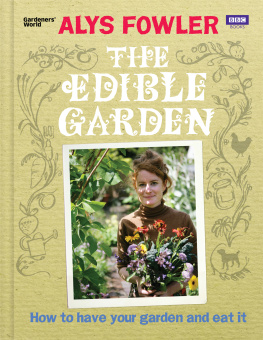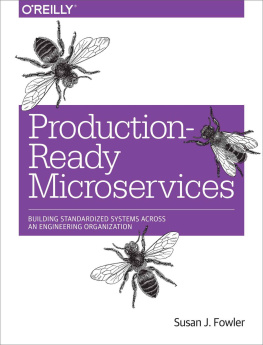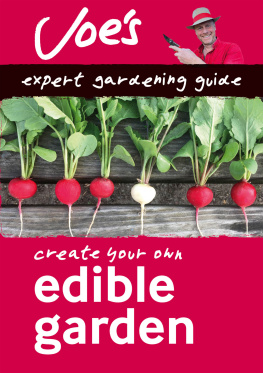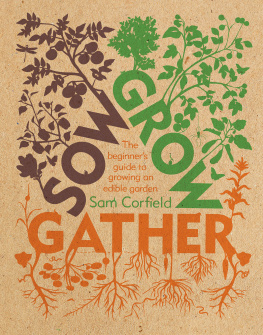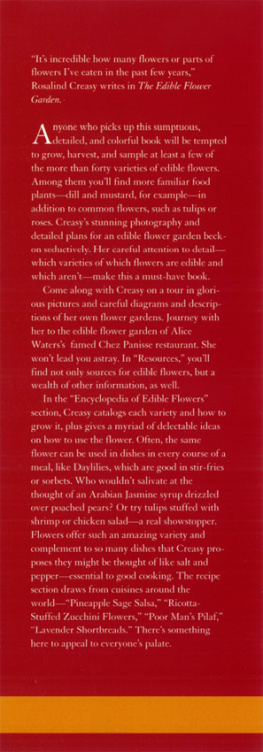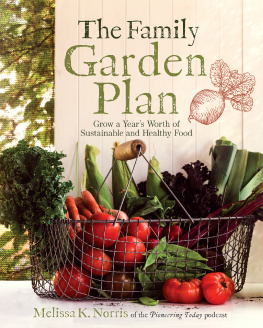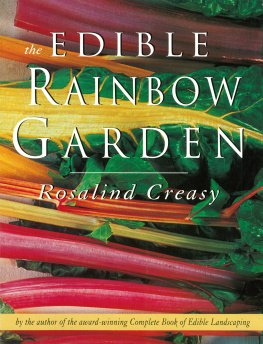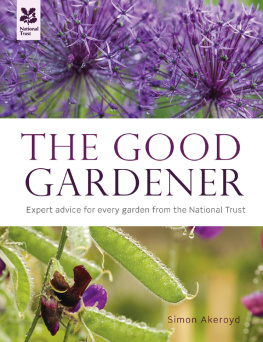
CONTENTS
About the Book
Call is floral food, edible landscaping, ornamental vegetable gardening, call it what you like, but if you want to grow courgettes in your borders, plant cabbages on roundabouts, grow your lettuce amongst the flowers, and if you do the best part of your gardening in bare feet, or if your garden isnt behind your house, then welcome to another way.
In this timely new book, Gardeners Worlds thrifty and resourceful Alys Fowler shows that there is a way to take the good life and re-fashion it to fit in the city. Abandoning the limitations of traditional gardening methods, she has created a beautifully productive garden where tomatoes sit happily next to roses, carrots are woven between the lavenders and potatoes grow in pots on the patio. And all of this is produced in a way that mimics natural systems, producing delicious homegrown food for her table. And she shares her favourite recipes for the hearty dishes, pickles and jams she makes to use up her bountiful harvest, proving that no-one need go hungry on her grow-your-own regime.
Good for the pocket, good for the environment and hugely rewarding for the soul, The edible Garden urges gardeners everywhere to chuck out the old rules and create their own haven thats as good to look as it is to eat.
About the Author
Alys trained at the Horticultural Society, the New York Botanical Garden and the Royal Botanic Garden at Kew. After finishing her training, she worked as a journalist for the trade magazine, Horticulture Week, and then joined the Gardeners World team as a horticultural researcher. The lure of the garden, however, proved too much and in 2006 Alys became Head Gardener at Berryfields. She is now a permanent presenter from Greenacre, the shows new home. Alyss inspiration for urban gardening comes from her time volunteering in a community garden on the Lower East Side in Manhattan, New York City. Much of the ethic, thrift and spirit she encountered there is found in her work today.
FOR JULIET
(This book is dedicated to Juliet Glaves)
Introduction
I want it all, the whole far-flung earth and everything in it.
I want streams and hills, rivers and seas, mountains and pastures. I want a whole, happy, earth. And when Im not being overly ambitious about my environmental desires, I also want a garden with a little bit of everything in it. These two desires are not unconnected: my happy earth will, in part (and no small part), be achieved by my ability to grow a large percentage of my food in my garden, in a way that does not devour resources.
It has never been possible for us all to have gardens big enough for herbaceous borders, rockeries, orchards and vegetable patches. And it is not going to happen now, but too often I hear the same complaint, I want to grow vegetables but my garden isnt big enough for a separate patch. To this I say mix it together and dont worry about the rules that say things need to be segregated. You can have your vegetables, fruit and flowers in a productive garden that is beautiful to look at. It is actually not difficult to marry the joys of growing your own with the beauty of a flower garden.
There are thousands of us out there that are desperate for wholesome, home-grown food, but not at the expense of our city lives. This book is about taking the good life and re-fashioning it on bits of wasteland, in back gardens and on fire escapes. From planting plans to political issues, this book looks at how and why we need to make our gardens more productive. In todays world, growing your own not only makes economic sense, its a powerful political gesture about our oil-reliant food chain and how we can go about fixing it.
Whether you have a balcony, a courtyard or a sprawling plot this is about saying that your garden pleases you, pleases your palette and pleases the wider environment.
A LITTLE HISTORY
Growing in straight lines hasnt always been the norm for vegetable gardens, nor have they been exclusively about vegetables. The segregated kitchen or productive garden is a Victorian throwback: it says more about money and space than anything else. While the rich kept their vegetables, flowers and ornamental plants strictly separated, smaller gardens elsewhere were more likely to be a mixture of both.
The traditional cottage garden is a mixture of flowers and vegetables, often grown in what might appear to be a slightly haphazard manner. The potager is a grander version, with more order (and more lines), but is essentially about mixing the benefits of flowers, fruits and vegetables together. The cottage garden is quintessentially English, the potager says France, and if you hop across the pond youll find another, more contemporary, style called edible landscaping. Edible landscaping aims to create a space in which useful plants are designed into the garden landscape. In other words, you can eat your view.
Although some edible landscapes can be quite formal (using vegetables like bedding plants to create careful patterns), others happily abandon traditional formalities and seem to mix form, function and frivolity. They may include herbs for the kitchen, cut flowers for the vase, plants to bring in beneficial insects, vegetables to dine off, and maybe habitat nooks such as ponds and insects homes to bring the rest of nature in to play.
Its this rule-breaking style thats won my heart. I have set out on a journey to make an art out of supplying my kitchen. I can only guarantee one thing: there will be no straight lines.
POLYCULTURE
Growing more than one species or variety of vegetable together is called polyculture, contrasting with monoculture where you grow a single species. An organic garden that grows more than one type of vegetable is a type of polyculture, but true polyculture is to grow a variety of plants together that will benefit from being in an ecological community. Perhaps the best-known version of this idea is the Three Sisters, the traditional Native American way of growing beans, corn and courgettes or pumpkins together. The beans grow up the corn and courgettes scramble around the base. The beans lend nitrogen to the hungry corn, the corn acts as stakes for the beans to climb up and the courgettes act as a living mulch, conserving water and keeping weeds down. Together, the three make a community. Polyculture is a new name for a very ancient way of farming that aims to mimic natural ecosystems by following natures pattern.
More complex polycultures can use up to nine different species. Here, radishes, lettuces, cabbages, pot marigolds and parsnips are all sown at the same time, each variety being broadcast in drifts across your patch of land. Radishes emerge first, shading the ground and trapping moisture to benefit the other vegetables. As you start to harvest your radishes more vegetables begin to germinate. Regular picking allows each plant to establish its space within the system. Deep-rooted vegetables, such as parsnips, exploit the lower soil and shallow-rooted ones, such as lettuces, exploit the upper soil, which should mean less competition for resources. You do have to thin your crops constantly, but experiments show that given two equal-sized pieces of land you can plant more per area using polyculture methods, with equal or greater plant emergence, and although plants do tend to grow more slowly under polyculture, overall yield is usually greater.

